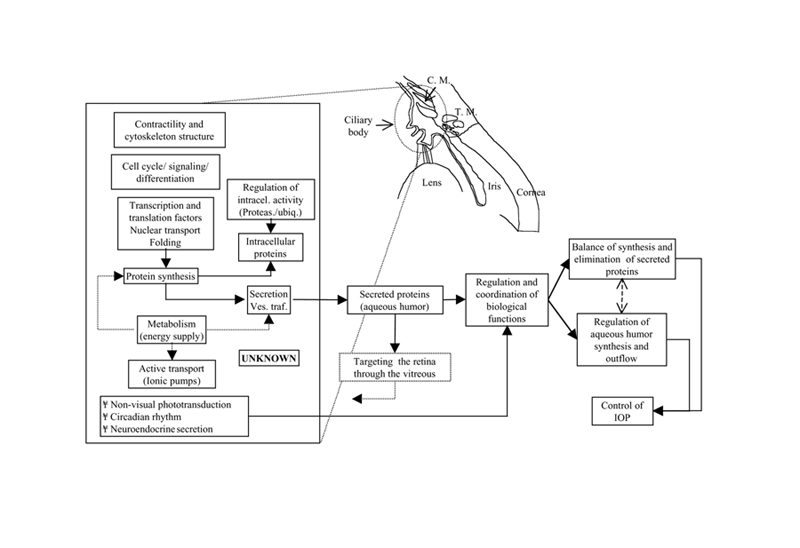![]() Figure 2 of
Escribano, Mol Vis 2002;
8:315-332.
Figure 2 of
Escribano, Mol Vis 2002;
8:315-332.
Figure 2. Biological functions of the ciliary body according to the analysis of subtracted ESTs
Diagram showing the major biological functions of the ciliary body suggested by the analysis of 284 ESTs obtained by subtractive hybridization. These functions and their relationships are shown in the context of the anatomy of the anterior segment of the eye. Protein synthesis appears to be an important activity in the ciliary body, producing both intracellular and secreted proteins. Genes are expressed to generate the metabolic energy required to fuel this process as well as the more general activity of ionic pumps taking part in the secretion of aqueous humor. It is proposed that some of the secreted molecules (neuropeptides, proteinases, proteinase inhibitors), could act as regulators of biological functions in the anterior segment of the eye, including aqueous humor inflow and outflow. Furthermore, through enzymatic degradation or drainage will regulate the balance of synthesis and elimination of secreted proteins. Overall these processes can lead to the control of the IOP. In the coordination of these activities, the putative non-visual phototransduction system and genes of the circadian rhythm system could also play an important role. Some of the secreted molecules can be targeted to tissues of the anterior segment of the eye, but by diffusion through the vitreous humor they could even reach the retina. The identification of a group of unknown ESTs, as well as groups of ESTs involved in regulating cell signaling, cell cycle and differentiation is also indicated. C. M.= ciliary muscle; T. M.= trabecular meshwork.
